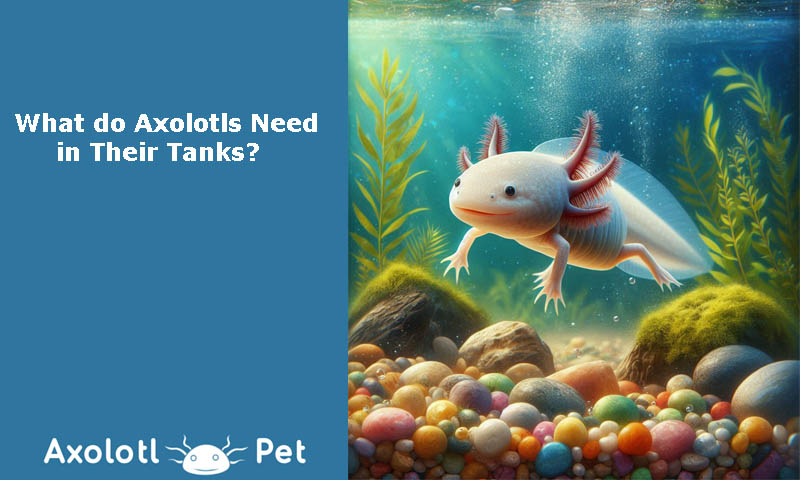What do Axolotls Need in Their Tanks?
Axolotls are fascinating aquatic creatures that require specific care to thrive in captivity. To ensure their well-being, you must create a tank environment that mimics their natural habitat. Here’s what axolotls need in their tanks:
1. Tank Size
Axolotls require spacious tanks to accommodate their growth and movement. A single adult axolotl needs a tank of at least 20 gallons, but larger tanks (e.g., 40 gallons) are ideal, especially if you plan to house more than one axolotl.
2. Water Parameters
Axolotls are sensitive to water quality.
- Temperature: Maintain water temperatures between 60–68°F (15–20°C). Avoid high temperatures, as they can stress the axolotl.
- pH Levels: Keep the pH between 6.5 and 8.0.
- Ammonia, Nitrite, and Nitrate: Ammonia and nitrite levels should be 0 ppm, while nitrate levels should be under 20 ppm. Regular water testing and filtration help maintain these levels.
3. Substrate
Choose a safe substrate to prevent impaction, a common health issue in axolotls caused by ingesting debris.
- Fine Sand: The best option for axolotls, as it is gentle on their delicate bodies and less likely to cause harm if swallowed.
- Bare Bottom: An alternative for easy cleaning but may make it difficult for the axolotl to grip surfaces.
- Avoid Gravel: Gravel can easily be swallowed, leading to blockages.
4. Filtration
A good filter is essential for maintaining clean water. Use a low-flow filter to avoid creating strong currents that can stress axolotls. Sponge filters are a popular choice for their gentleness and efficiency.
5. Hiding Spots and Decorations
Axolotls need hiding spots to feel secure.
- Use caves, PVC pipes, or aquarium-safe decorations as shelters.
- Ensure all decorations are smooth and free of sharp edges to prevent injuries.
6. Lighting
Axolotls prefer dim lighting, as they have sensitive eyes. If you use lighting in the tank, provide plenty of shaded areas where they can retreat.
7. Plants
Live or artificial plants can enhance the tank’s appearance and provide additional hiding places.
- Live plants like java moss or anubias are suitable because they thrive in low light and cool water.
- Make sure any artificial plants are soft and free from sharp edges.
8. Regular Maintenance
Perform weekly partial water changes (20–30%) and monitor water quality to prevent harmful build-up of waste. Clean decorations and substrate as needed to maintain hygiene.
Creating a stable and clean environment tailored to the axolotl’s needs ensures their health and happiness in captivity.



-0 Comment-